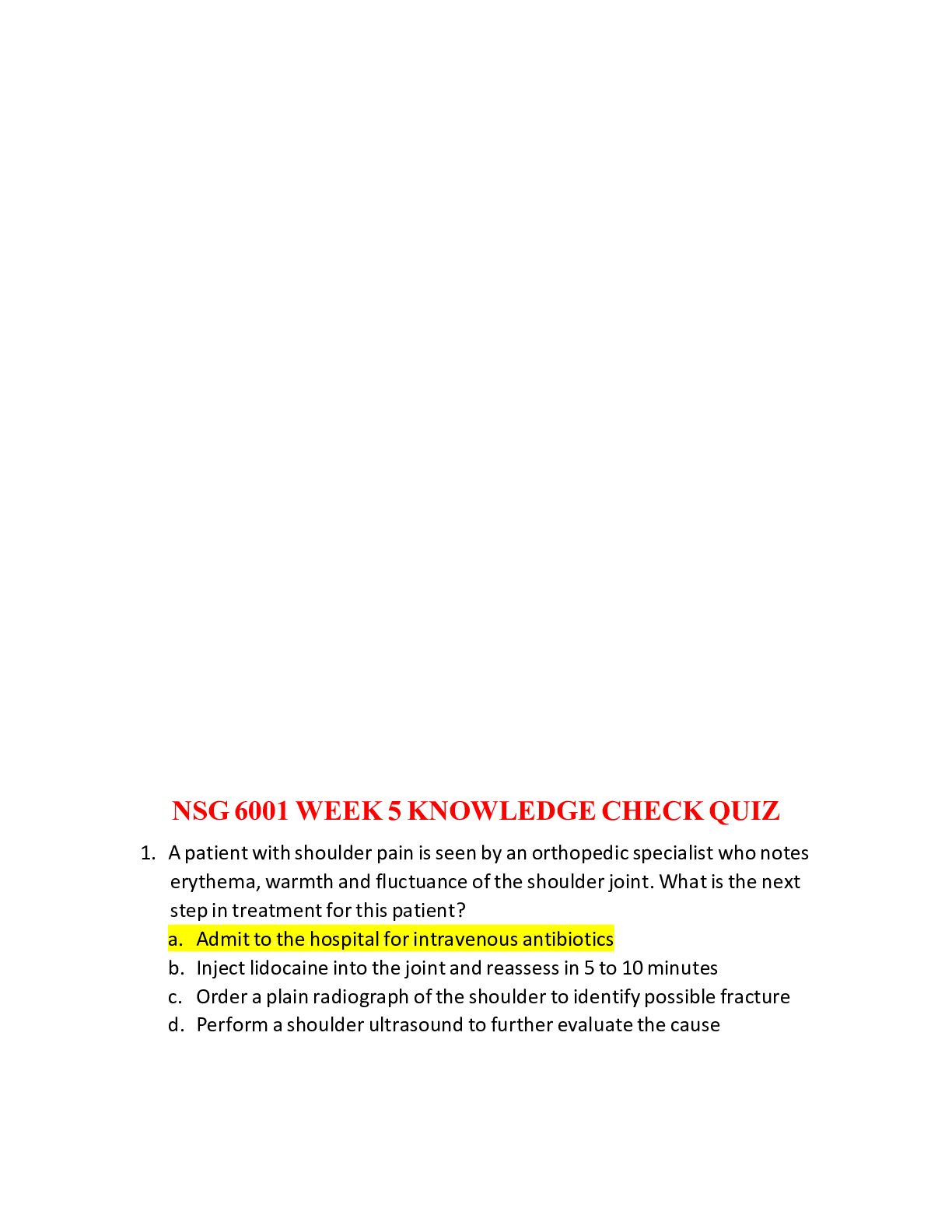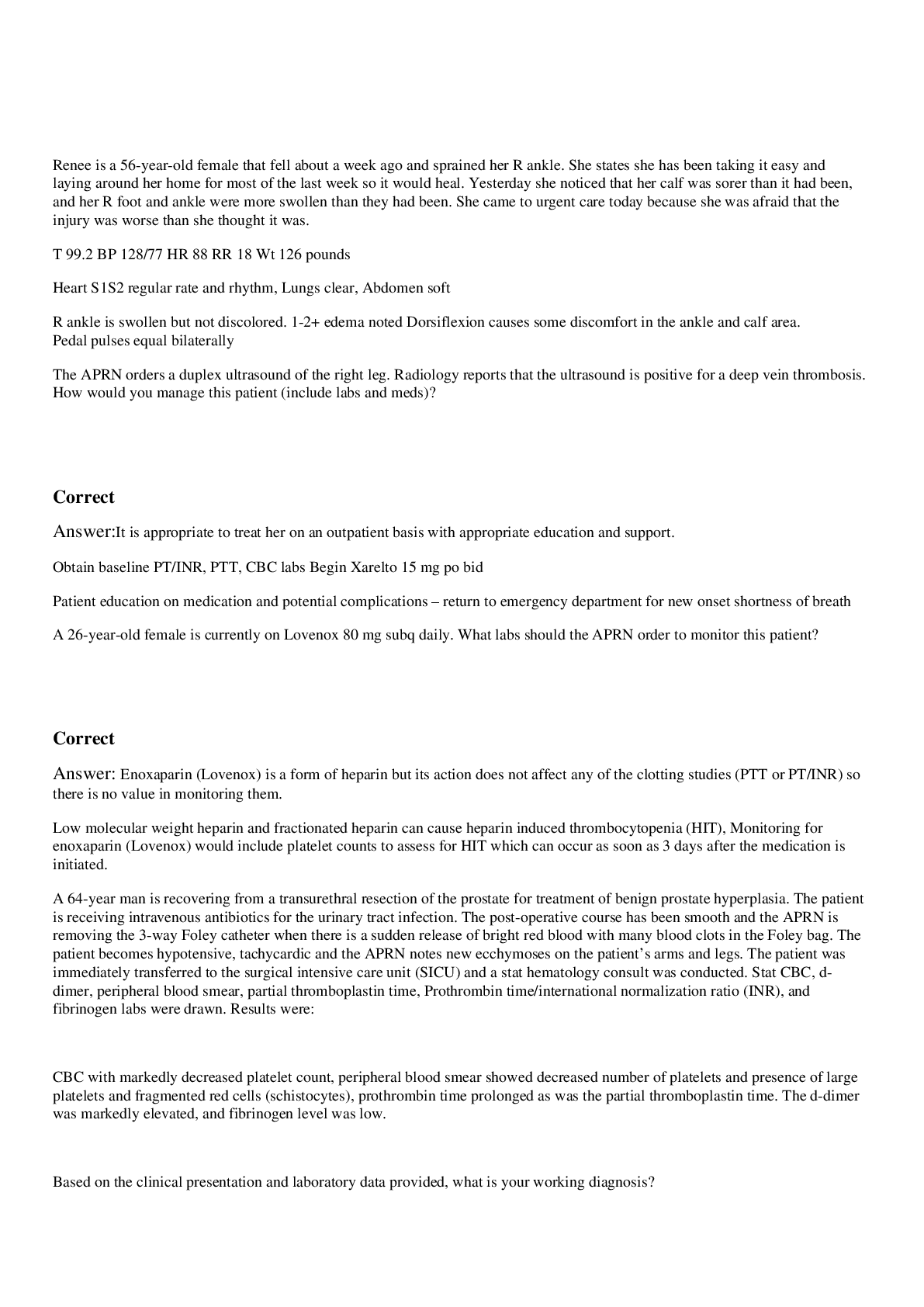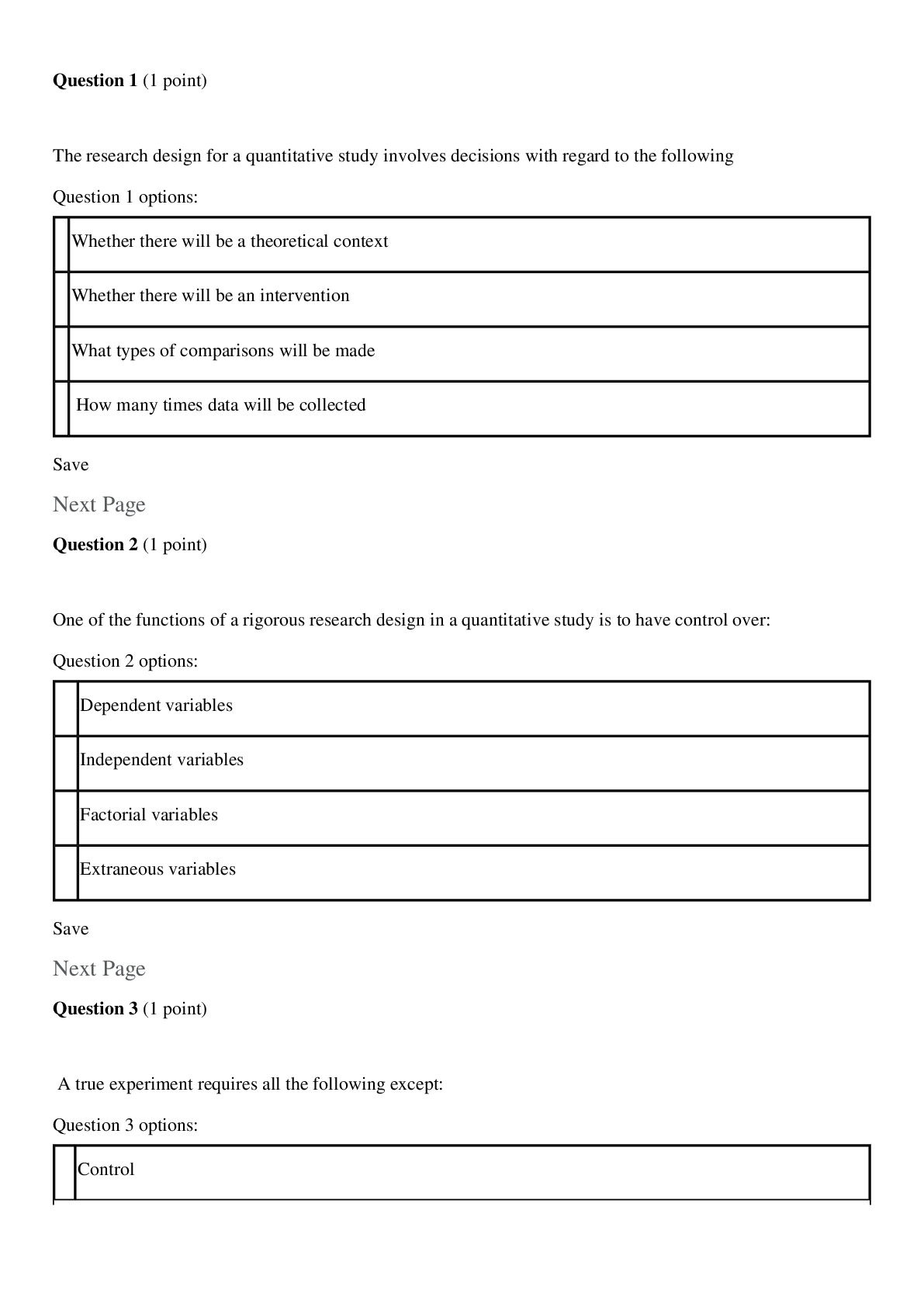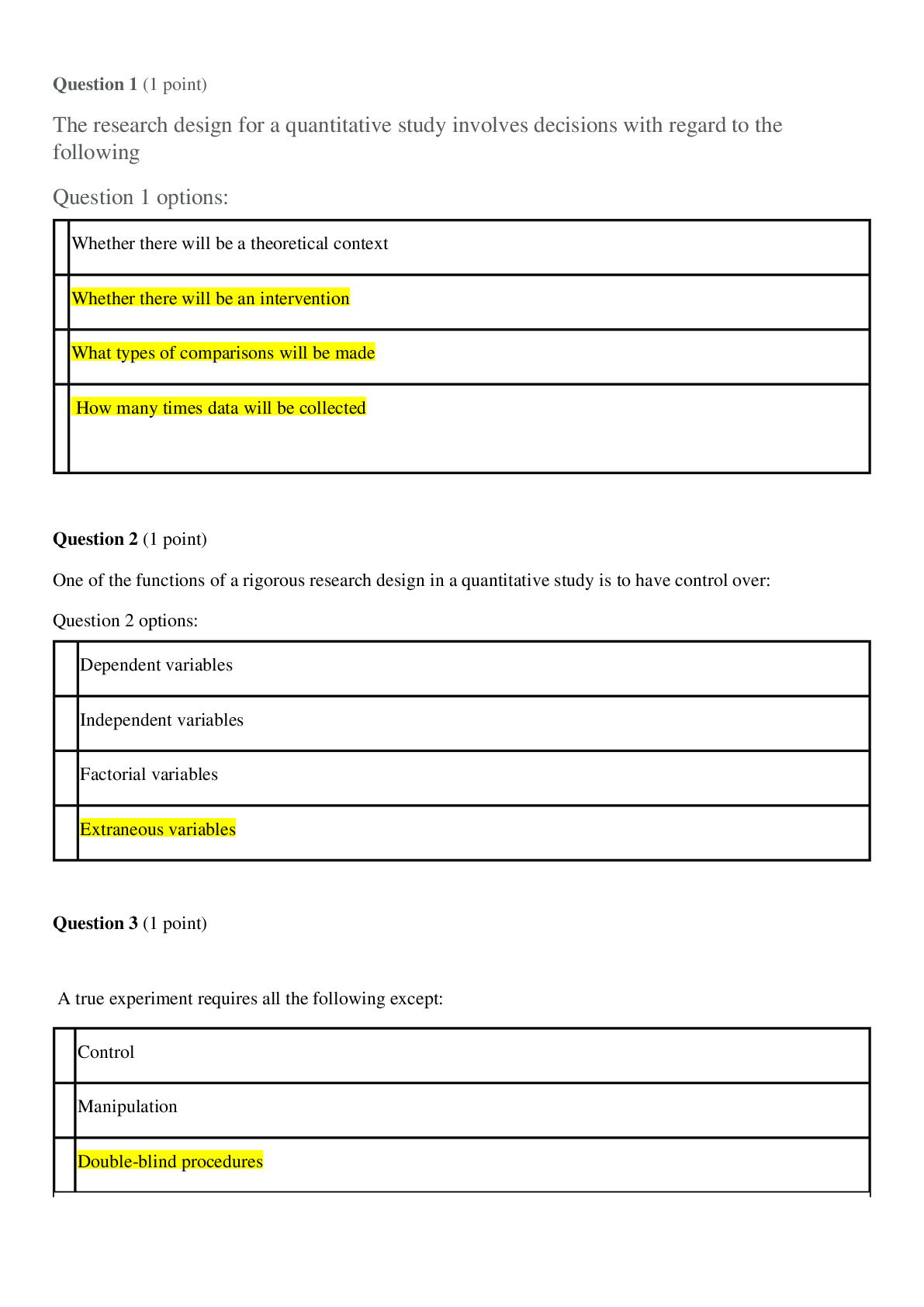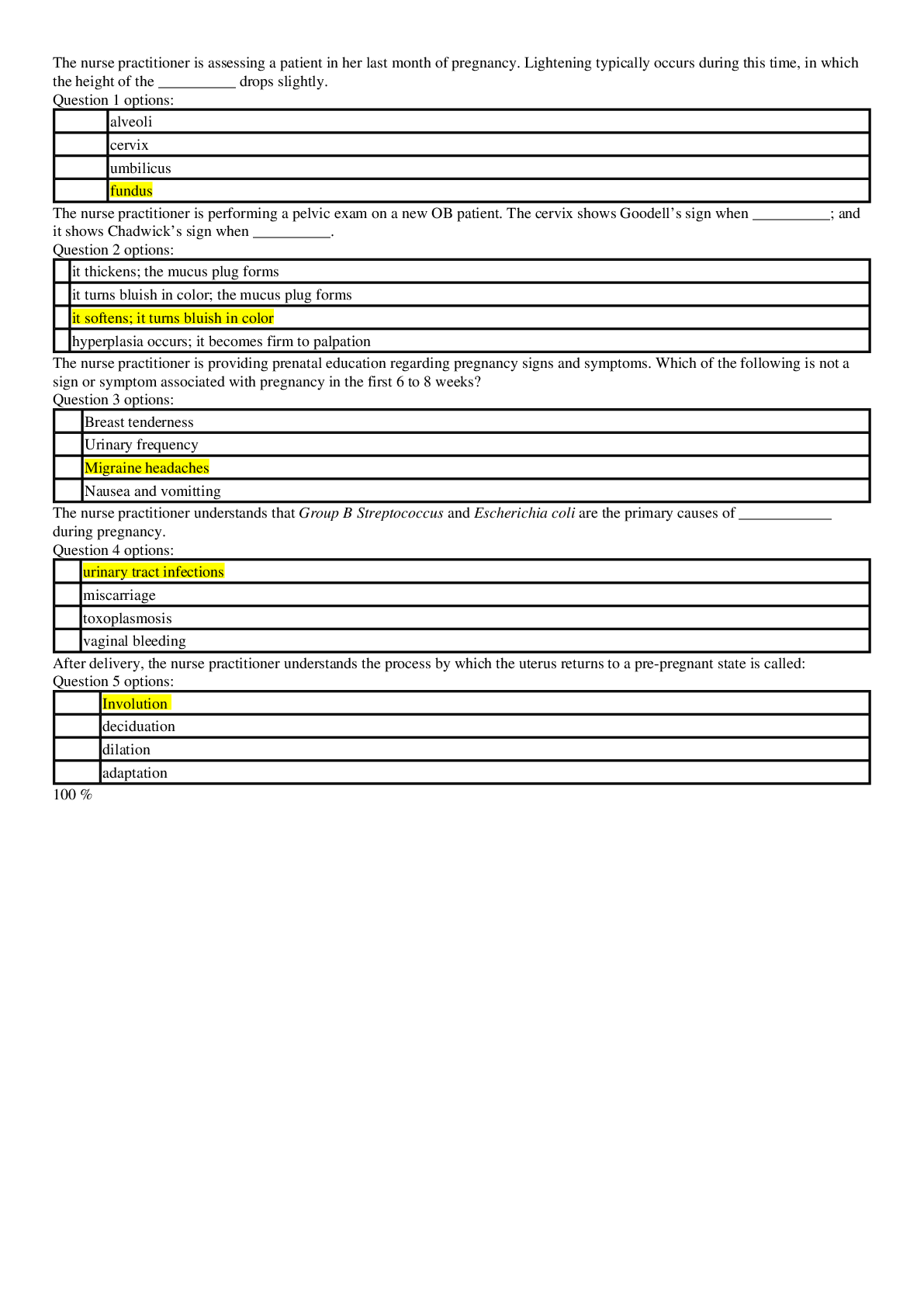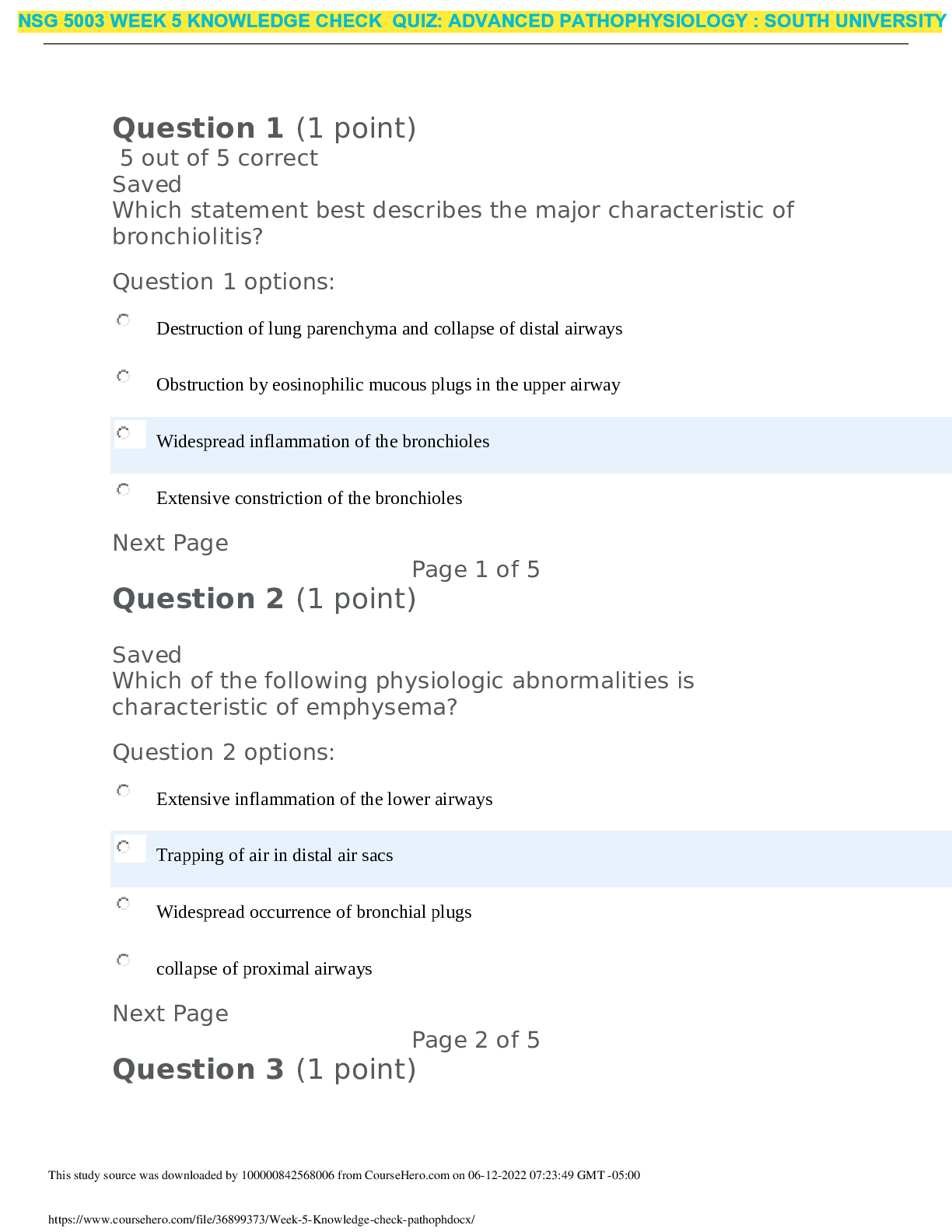*NURSING > QUESTIONS & ANSWERS > NRNP 6540 Week 5 Knowledge Check {Latest Updated Version} (All)
NRNP 6540 Week 5 Knowledge Check {Latest Updated Version}
Document Content and Description Below
NRNP 6540 Week 5 Knowledge Check 1. When performing an assessment on patients over 65 years of age, what are at least three (3) key symptoms that may indicate cardiovascular disease? When assess... ing a patient over 65 years old, the key symptoms that may indicate cardiovascular disease include dizziness, syncope, orthopnea, angina, edema, and claudication. Syncope can occur due to asystole or an intermittent symptom may be due to an underlying arrhythmia. Orthopnea may indicate a patient with heart failure. Intermittent claudication is an early symptom of peripheral artery disease. 2. You diagnose your older patient with intermittent asthma. List at least three (3) criteria for the diagnosis of intermittent asthma. When diagnosing intermittent asthma, the following criteria must be satisfied: symptoms should occur equal or less than twice a week; nightime awakenings should be equal or less than twice a month; short-acting-beta -agonist use for symptom control is equal or less than twice a week; there should be no interference with normal activity; and lung function should show normal FEV1 between exacerbations, FEV1 more than 80% predicted, and FEV1/FVC is normal. 3. Mrs. L is a 71-year-old Hispanic female with a PMH of seasonal allergies and her only medication is aspirin 81 mg; she presents to the clinic with the following symptoms: Recurrent wheezing, cough (especially occurring at night), recurrent chest tightness, and dyspnea on exertion. She also complains of a chronic rhinorrhea with postnasal drip. Please list four (4) differential diagnoses for these symptoms. With the subjective symptoms presented, the following will be the differential diagnosis : 1. Asthma- recurrent wheezing, cough (occuring at night), recurring chest tightness, and dyspnea on exertion 2. COPD - dyspnea, cough, wheezing, chest tightness 3. Upper Respiratory Infection - rhinorrhea, cough, post nasal drip 4. Pneumonia - dyspnea, chest tightness, cough 4. Your 69-year-old African American female patient has a PMH of asthma. You know that In the United States, asthma is more prevalent in African Americans. List at least three (3) factors that contribute to development of asthma. Factors that contribute to development of asthma are: exposure to allergens, respiratory infections, genetic predisposition, atopy, occupational irritants, tobacco smoke (active and passive smoking) high levels of indoor and outdoor pollution, and obesity. Allergens like animal fur, molds and other environmental allergens may trigger asthma attack. Multiple genes can contribute to developing asthma in different ethnic groups. According to the American Lung Association, fat tissue produces inflammatory substances that could impair lung funcion and lead to asthma in obese patients. 5. A 78-year-old patient, past one ppd smoker times 10 years (quit 10 years ago) presents with increasing shortness of breath, dyspnea on exertion, and no other symptoms. Name two diagnostic tests you could order to differentiate between asthma and COPD. To differentiate between asthma and COPD, the two diagnostic tests can be done: 1. Spirometry or pulmonary function testing particularly FEV 1, FEV6, FVC, and FEV1/FVC ratio before and after bronchodilator challenge would be the diagnostic tests that can differentiate asthma from COPD especially in older patients with prior smoking history. 2. As endorsed by the American Thoracic Society (ATS), the use of FeNO (fractional nitrous oxide) measurement in exhaled breath, as a biomarker of eosinophilic inflammation is a tool to assess airway disease and helps distinguish asthma from COPD. 6. According to the GOLD Pocket Guide to COPD Diagnosis, Management, and Prevention, A Guide for Health Care Professionals, 2017, what would the predicted FEV be for GOLD 4 very severe COPD? The GOLD Pocket Guide to COPD Diagnosis, Management, and Prevention discussed that the predicted FEV1 for GOLD 4 very severe COPD is less than 30%. 7. You are performing a Medicare home assessment on an 84-year-old male. Part of this exam is checking for carotid bruits. Describe two reasons this exam is important in an older adult: Two reasons that carotid arteries should be assessed for bruits in older adults are the following: 1. Patients with carotid bruits that are asymptomatic are at risk for stroke. Bruit in an asymptomatic patient may indicate occult carotid artery stenosis that may lead to a stroke. 2. Since carotid stenosis is a symptom of widespread atherosclerosis, a carotid bruit may also indicate an increased risk for a heart attack. 8. Edna is a typically healthy 80-year-old patient who is now complaining of new shortness of breath when she climbs stairs at home, and she states she has been more tired than usual. List three ROS questions you would want to ask her, using the OLDCARTS method. Using the Onset, Location, Duration, Characteristics, Aggravating factors, Relieving factors, and Timing (OLDCART) mnemonic, three review of symptoms questions I would ask Edna are the following: 1. When did your shortness of breath start? 2. How long does the shortness of breath and fatigue last? 3. Is there anything that relieves your shortness of breath and fatigue? 9. Your 69-year-old patient who has daily asthma symptoms with nighttime awakenings weekly but not nightly, and an FEV >60 but <80 would have the diagnosis of what type of asthma? The patient with nighttime awakenings weekly but not nightly and an FEV >60 but <80 would be diagnosed with Persistent Moderate Asthma. 10. Pharmacological therapy for COPD has a significant role in reducing symptoms, reducing exacerbation frequency and severity, along with improving exercise tolerance, health status, and quality of life. Describe two pharmacological regimens for COPD with rationale, names of medications, duration of action, two side effects, and stage of COPD you would use this medication. Two pharmacologic regimens for COPD would include the following: 1. Inhaled Beta-Agonist Bronchodilators: short acting beta agonists (SABA) or long acting beta agonists (LABA) a. rationale: to reverse bronchoconstriction by relaxing smooth muscles in the airways. b. name of medications: albuterol or levalbuterol ( SABA) and formoterol and sameterol ( LABA) c.. duration of action: 4 to 6 hours (SABA) and 12 hours (LABA) d. side effects: transient tachycardia, nervousness, palpitations and arrhythmia e. stage of COPD indication: SABAs are given for relief of acute symptoms or intermittent symptoms while LABAs are given as maintenance therapy to prevent acute bronchospasms 2. Inhaled Anticholinergic/Antimuscarinic Bronchodilators: a. rationale: block the bronchoconstriction effects of acetylcholine on muscarinic cholinergic receptors in the smooth muscle of the airways b. name of medication: ipatropium (short acting antimuscarinic) c. duration of action: 6-8 hours d. side effects: has anticholinergic properties so patient can have dry mouth, tachycardia e. stage of COPD indication: used in long-term and acute COPD management [Show More]
Last updated: 1 year ago
Preview 1 out of 3 pages
Instant download
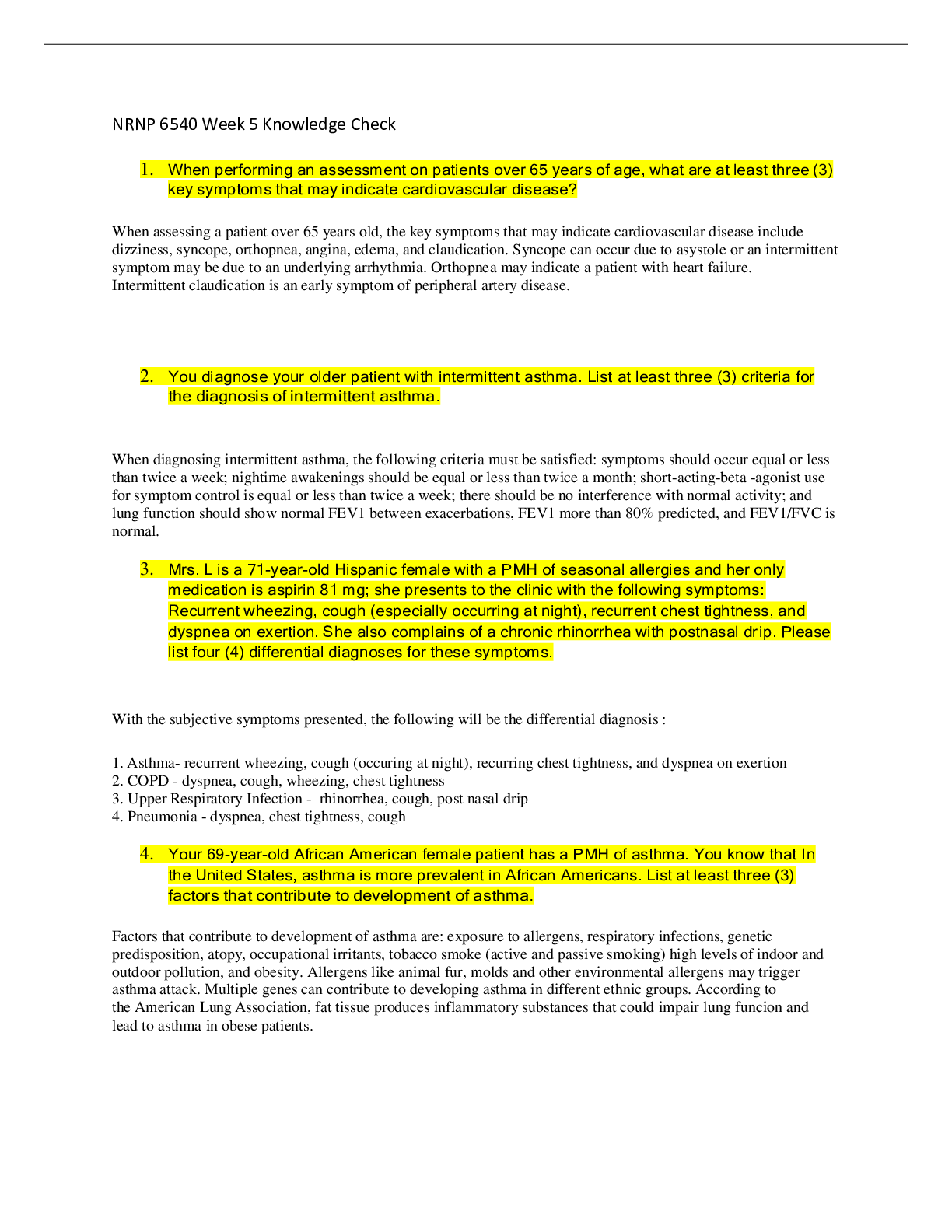
Buy this document to get the full access instantly
Instant Download Access after purchase
Add to cartInstant download
Reviews( 0 )
Document information
Connected school, study & course
About the document
Uploaded On
Nov 17, 2021
Number of pages
3
Written in
Additional information
This document has been written for:
Uploaded
Nov 17, 2021
Downloads
0
Views
130

.png)
.png)
.png)
.png)
.png)
.png)
.png)
.png)
.png)
.png)
.png)



